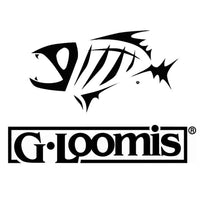
- Part 1: Intro to Kayak Fishing
- Part 2: Choosing a Kayak
- Part 3: Outfitting Your Kayak
- Part 4: Transporting a Kayak
- Part 5: Kayak Storage
- Part 6: Going Fishing
Kayak fishing is something that takes a little while to learn and perfect. Once you find the fish you will need to learn how to control your boat while you cast, play and land your fish. And you will need to do this quietly. You will also need to figure out the best place for you to put your rod, paddle and other items so you can get what you need when you need it. You will develop your own technique as you paddle and fish but here are some general ideas to get you started.
Flats Fishing from a Kayak

Most of the time when you are fishing a flat you will be sight fishing for whatever may be out there. The idea is to paddle or pole along until you see a fish then stop the boat and cast at the fish without making any noise that will spook the fish. You can use your paddle or push pole to move yourself along or, if the water is shallow enough, your stakeout pole. I like to keep my rod laying in my lap with the tip sticking out over the bow of the boat. When using a fly rod I will have some line stripped out in the bottom of the kayak and the fly will either be dragging in the water or sitting in the boat. Just make sure your line isn't tangled!
When I see a fish I stop the boat, put the paddle across my lap, and if necessary anchor the boat. If it is a calm day with no current the boat may stay stationary. If this is not the case (and it usually isn’t) you will need to anchor yourself to the bottom in some way. If the water is shallow enough you might be able to stick your leg over the side and stop yourself with your foot. If this won’t work then use your stakeout pole. I keep my stakeout pole attached to my anchor trolley with a short rope on the upwind side of the boat so all I have to do is pick it up and stick it in the bottom. If you have been using your stakeout pole to move your boat then you can quickly stick it through a loop in the anchor trolley and into the bottom. You will need to do this quietly! Practice before there are any fish around. The next step is to pick up your rod, make a cast and hopefully hook, play and land a fish.

If there is a fair amount of wind and it is blowing the right direction (where you will have good visibility ahead of you) drift fishing is a good bet. A sea anchor on a 3-5’ rope works well to slow down your drift and to keep you at a constant angle. Set up your drift, stow your paddle and hold your rod in one hand and your stakeout pole in the other. If you see a fish, a fishy looking spot, or anything that would lead you to believe that a fish may be nearby use your stakeout pole to stop the boat and make a cast.
If you feel comfortable standing up in your boat you will be able to see many more fish and will likely get more shots. I spend a lot of time standing up and paddling when searching for fish. If the water is shallow you can use your paddle as a push pole. When I find fish I may sit down and stalk them from a sitting position or remain standing. It is a little more difficult to stop the boat, get your rod and make a cast when standing but with a little practice you can certainly figure it out. Drift fishing while standing can actually be a little easier. I like to drift with the rod in my downwind hand and my stakeout pole, attached to my anchor trolley, in my upwind hand. When I see a fish I bend down and anchor the boat with the stakeout pole then make a cast.
If you are in a shallow hard-bottomed area you may want to stake the kayak out or tow it behind you and wade fish. Sometimes the best way to approach a spooky fish – especially one that is staying more or less in the same place - is on foot.
Fishing Deep(er) Water
Kayaks are ideal craft not only for flats fishing but also for fishing deeper saltwater areas as well as freshwater lakes, ponds and rivers. For inshore or freshwater fishing in water over about two feet deep, an anchor can be very helpful. If you have some idea of the depth of the water you can have your anchor tied off at a predetermined length. When you want to stop and fish an area just lower your anchor over the edge and cast away. Use your anchor trolley to control the angle of the boat. When fishing structure I usually find it easiest to use an anchor. When blind fishing a deeper area or a long shoreline, however, drifting can be the way to go. If there is much wind just use a drift chute to slow you down and control your angle and cast as you go.
As you spend time in your kayak you will develop your own system and figure out what works for you and what doesn’t. Everybody develops a slightly different technique. Have fun and don’t be afraid to try new things!















Comments